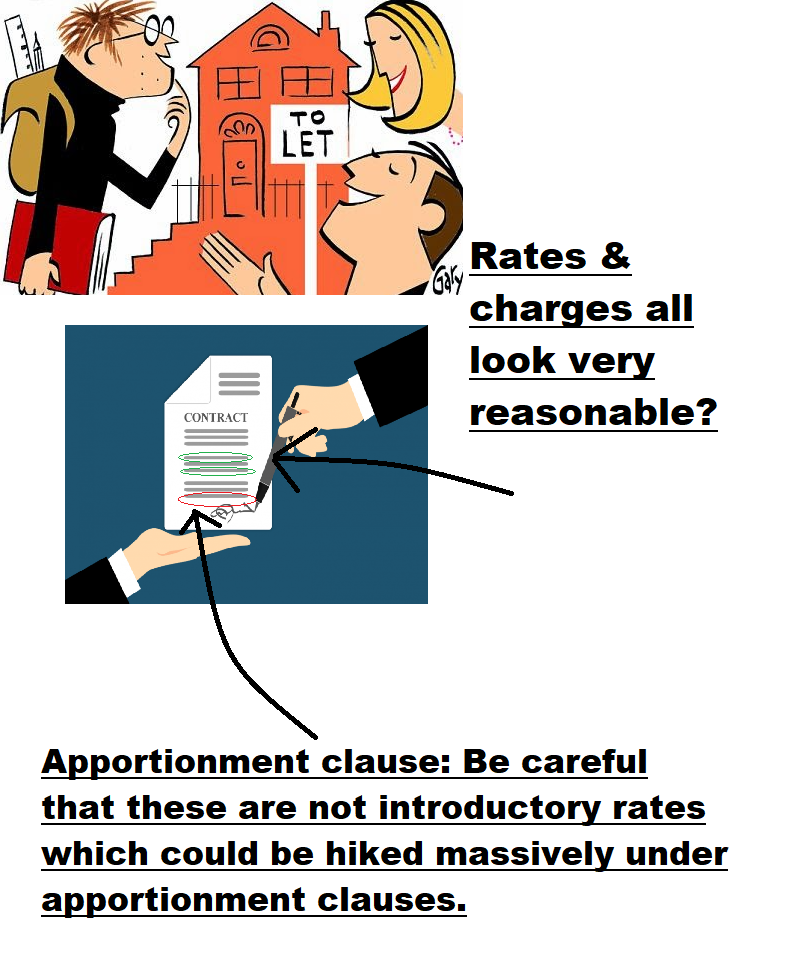Aviva Investors Ground Rent GP Ltd & Anor v Williams & Anor [2023] UKSC 6 (08 February 2023)
Citation:Aviva Investors Ground Rent GP Ltd & Anor v Williams & Anor [2023] UKSC 6 (08 February 2023)
Rule of thumb:Can you buy a flat or house and look at the rates for management of the common areas by factors/property managers, and think they look very reasonable, so you buy the property, and then all of a sudden after a few years all these rates be hiked up via an ‘re-apportionment’ clause that you did not think much of beforehand? Yes! Always be careful – sometimes the rates for management of common areas by factors/property managers can seem very cheap with ‘introductory rates’, and then they use re-apportionment clauses to hike these up once you have bought the property.
Background facts:The basic facts of this case were that tenants agreed a lease with landlords. One of the terms agreed was how much as a % each tenant would pay towards the cost of maintaining the wider and the wider estate (garden, paths, road, pipes etc). The agreement stated that the % of the costs each tenant would pay would be less than 1%, 0.7% to be precise. However, there was a further clause stating that the tenant would be expected to pay a reasonable appointment of costs and this could be revised. The landlord tried to rely on this clause to argue that the 0.7% per tenant of costs was going to be increased. The tenants disputed this and argued that the 0.7% figure was the figure to be paid and this could not be changed.
Parties argued:This matter came down to the principle of contract interpretation of reasonable re-apportionment clauses in landlord & tenant contract. The landlord argued that the apportionment price stated was an attractive introductory price in the tenants’ favour which could be used to entice them into the contract, but could increased to a more reasonable % at a later date with the other clause. The tenants argued that the clause was invalid as the reasonable apportionment rate was already agreed.
Court held:The Court upheld the arguments of the Landlord. Where there are reasonable re-apportionment clauses in landlord-tenant agreements, these can be used to increase the apportionment figure agreed at the beginning of the contract to a higher apportionment rate at a later date.

Ratio-decidendi:
‘Applied to the provisions in issue in the present case, the construction which I now consider to be correct applies as follows. Those provisions gave the landlord two relevant closely related rights: first to trigger a re-allocation of the originally agreed contribution proportions and secondly to decide what the revised apportionment should be. In both respects the landlord is contractually obliged to act reasonably. The FtT decided that the landlord had acted reasonably in making the re-apportionment which was challenged, and it is not suggested that it fell foul of any part of the statutory regime, apart only from section 27A(6). But that subsection did not avoid the power of the landlord to trigger and conduct that re-apportionment, because the jurisdiction of the FtT to review it for contractual and statutory legitimacy was not in any way impeded. The original question, whether there should be a re-apportionment and if so in what fractions, was not a “question” for the FtT within the meaning of section 27A(6). The question for the FtT was whether the re-apportionment had been reasonable, and that question the FtT was able to, and did, answer in ruling on the tenants’ application under section 27A(1)’ Lord Briggs at 33.
Warning: This is not professional legal advice. This is not professional legal education advice. Please obtain professional guidance before embarking on any legal course of action. This is just an interpretation of a Judgment by persons of legal insight & varying levels of legal specialism, experience & expertise. Please read the Judgment yourself and form your own interpretation of it with professional assistance.

